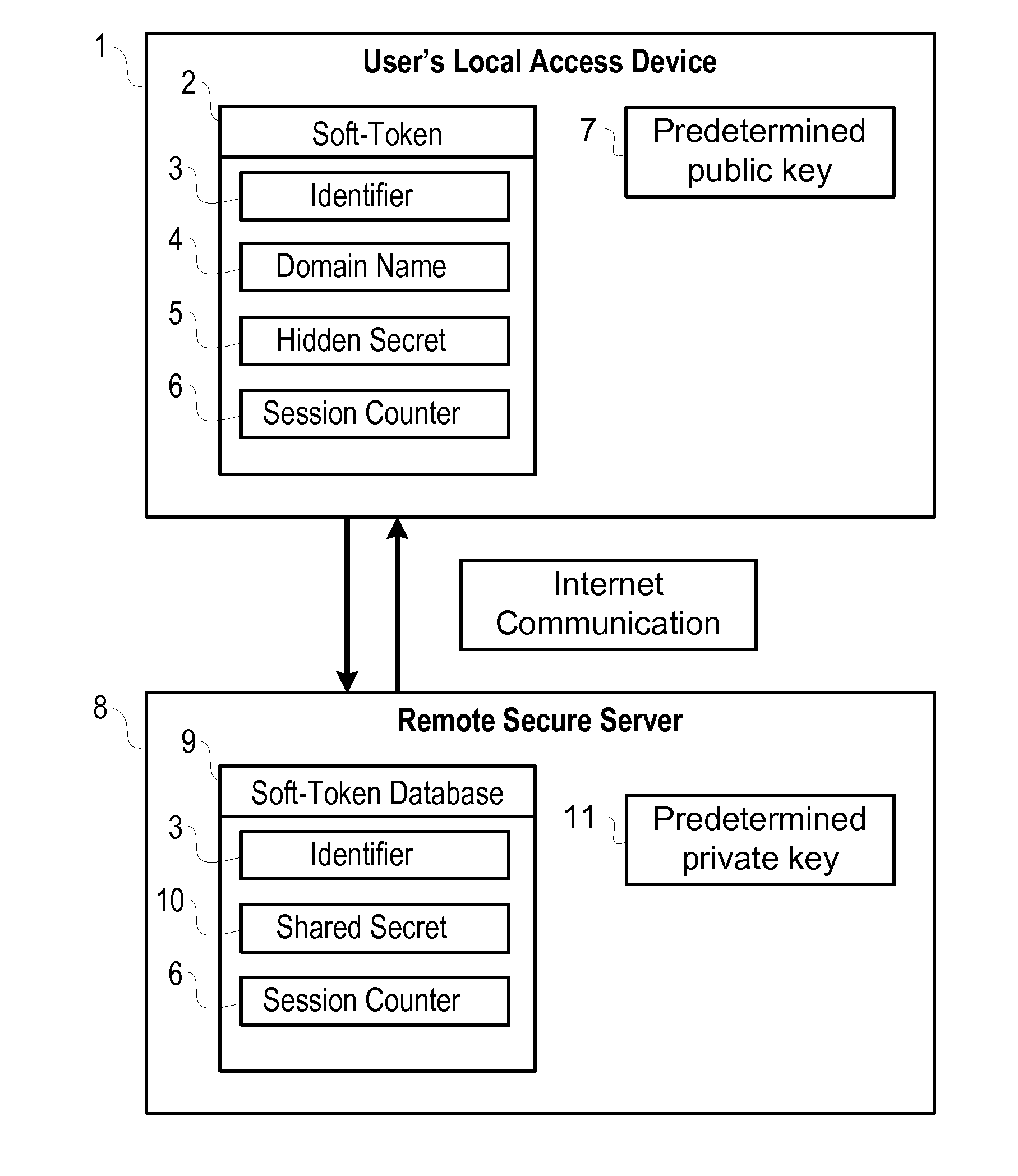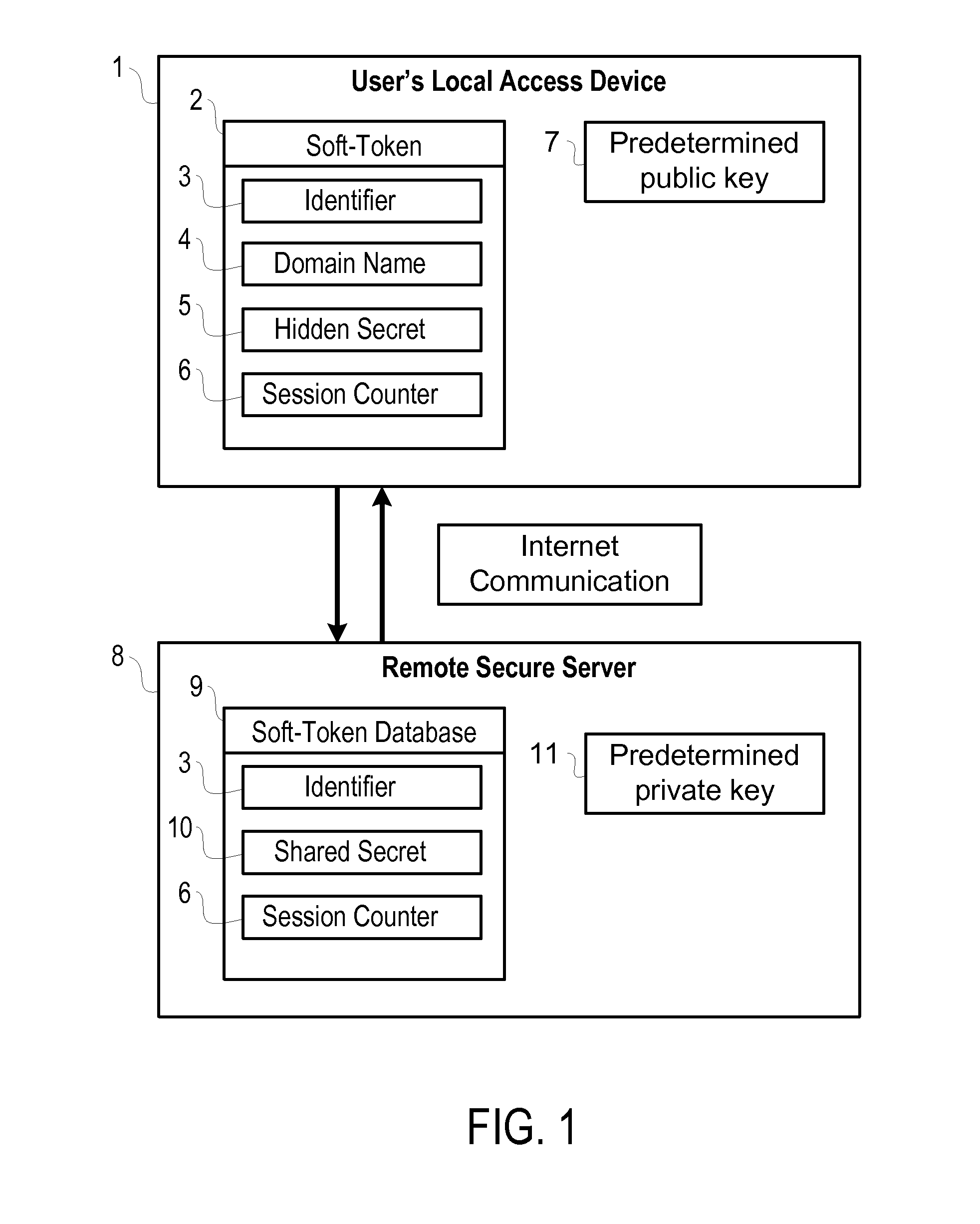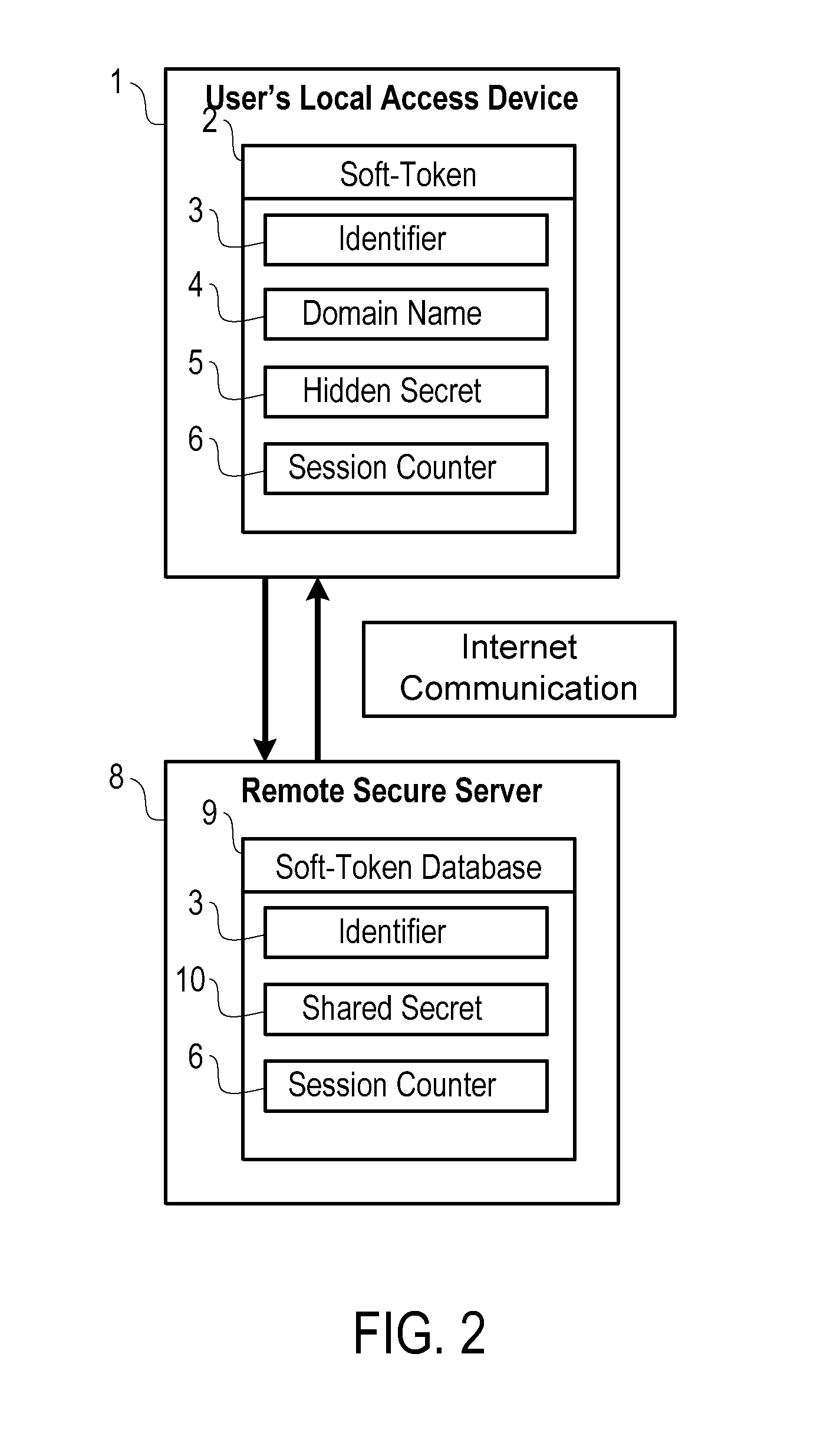Soft-Token Authentication System
a technology of authentication system and soft token, applied in the field of soft token authentication system, can solve the problems of invalidity and uselessness of duplicate copies of soft token credentials with each us
- Summary
- Abstract
- Description
- Claims
- Application Information
AI Technical Summary
Benefits of technology
Problems solved by technology
Method used
Image
Examples
Embodiment Construction
[0018]In its preferred embodiments, the present invention includes a means for providing a secure, dual authentication sign in of users with local devices, such as smart phones, pad computers, desktop computers, and laptop computers, over the Internet to a remote service. Reference will now be made to the drawing wherein like structures will be provided with like reference designations. Referring to FIG. 1, a user's local device 1 is connected to a remote service 8 over the Internet. Before the sign in can take place, the soft-token 2 must first be created on the user's local device 1 by saving soft-token data to the device's storage media.
Components of Soft-Token Data
[0019]The soft-token 2 stored on the user's local device 1 consists of several different components. The identifier 3 is used to uniquely identify the soft-token 2 to the remote service 8. The identifier 3 helps the remote service 8 look up the correct shared secret 10 and session counter 6 from a database 9. The domai...
PUM
 Login to View More
Login to View More Abstract
Description
Claims
Application Information
 Login to View More
Login to View More - R&D
- Intellectual Property
- Life Sciences
- Materials
- Tech Scout
- Unparalleled Data Quality
- Higher Quality Content
- 60% Fewer Hallucinations
Browse by: Latest US Patents, China's latest patents, Technical Efficacy Thesaurus, Application Domain, Technology Topic, Popular Technical Reports.
© 2025 PatSnap. All rights reserved.Legal|Privacy policy|Modern Slavery Act Transparency Statement|Sitemap|About US| Contact US: help@patsnap.com



